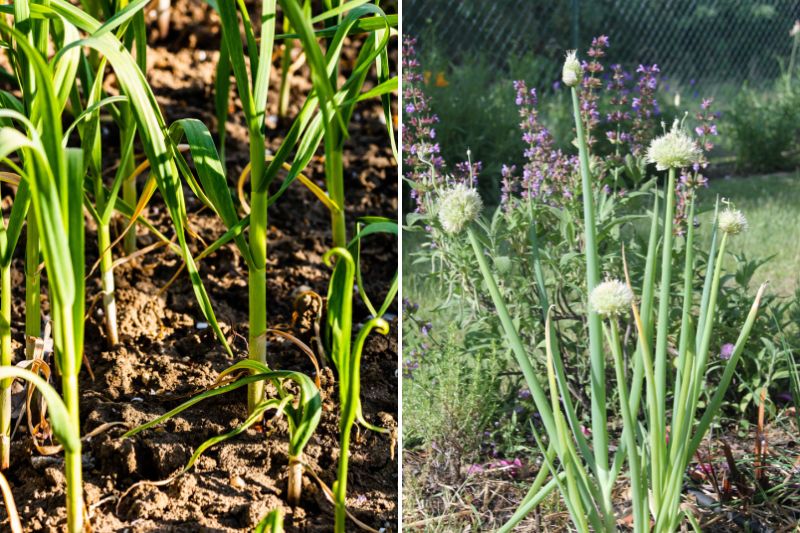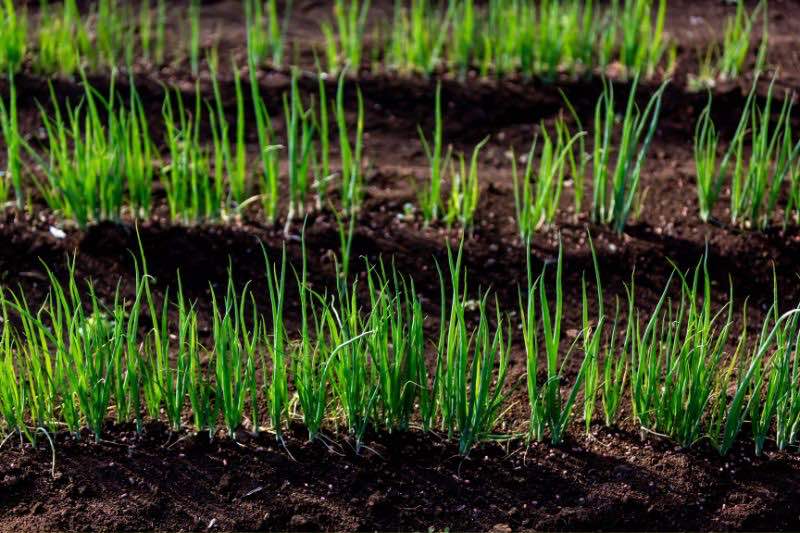Spring onions, also known as spring onions or scallions, are easy-to-grow vegetables that add flavour to many dishes. Often used in Asian cooking, this vegetable is also popular in many other world cuisines. Sowing spring onions is an excellent way to produce your own fresh, flavoursome vegetables to add to salads, soups, stews and much more. In this tutorial, we will guide you through every step of sowing spring onions, including soil preparation, watering and young plant care.
What is spring onion?
Spring onions or spring onion varieties are vegetables or aromatic plants of the family Allioideae. They are grown for their stems, which are long and thin with green leaves. Unlike common onions, spring onions have very small bulbs or almost no bulbs at all. In fact, to be precise, there are two types of spring onions: cebette and bunching onion (and no, this is not the title of one of La Fontaine’s fables!).
Cebette (generally Allium cepa) has an elongated white bulb, with thick, hollow green stems. Leaves are flat and broad. Cebette has a sweet, mild flavour and both leaves and its small bulbs are eaten, like white onions (for example: variety 'Blanc de Lisbonne'). Among cebettes, there are also bulb-forming varieties with red bulbs, such as spring red onion 'Lilia'.
Bunching onion (Allium fistulosum), sometimes called winter onion, has a smaller, rounder bulb than cebette, with thinner, more hollow stems. Leaves are cylindrical and hollow and reveal a stronger, more pungent flavour than cebette. Bunching onion is grown only for its stems and leaves.
Leaves (the shoots emerging from the bulb) of spring onions taste milder and less pungent than common onions and are often used in salads, stir-fries, soups and other dishes to add flavour and colour. Spring onions are also a good source of vitamins and minerals, including vitamin C, vitamin K and potassium.

How to sow spring onions?
When to sow?
Spring onions can be sown at different times of year depending on region and climate. In general, spring onions can be sown from early spring through to late summer. If you live in an area with mild winters, you can even sow spring onions in autumn for a winter harvest.
Spring onion seeds take time to germinate; allow around 4 to 6 weeks for spring onions to grow after sowing.
For a spring harvest, sow spring onions as soon as soil has thawed and temperatures are warm enough for seed germination (around 10°C). For a summer harvest, sow seeds in late spring or early summer.

Where to sow?
Spring onions do well in light, well-drained soil rich in organic matter. It is important that soil is not too compacted, as this can impede root growth and make bulb formation difficult. If soil is heavy or clayey, lighten it by incorporating compost before sowing spring onions.
Spring onions need at least 6 hours of sunlight per day to grow properly. Choose a spot in garden that receives plenty of direct light.
How to sow?
1 . Prepare the soil: spring onions grow best in well-drained soil rich in organic matter. Amend soil with well-rotted compost or manure before sowing. Loosen and aerate soil well using a spade or a biofork, then rake to level surface;
2 . Sow the seeds: spring onion seeds can be sown directly into soil in spring or autumn. Scatter seeds over soil surface and cover lightly with soil. Spring onion seeds should be sown about 1 cm deep and spaced about 2.5 to 5 cm apart;
3 . Water regularly: Spring onions need regular watering to grow properly. Water regularly, but avoid waterlogging, as this can cause root and bulb rot;
4 . Harvest: spring onions can be harvested once they reach 15 to 20 cm in height. Cut them at soil level and use immediately, or let them grow longer for larger, thicker stems.

Required equipment
- Spade, digging fork or biofork
- Rake
- Hoe
- Watering can
- Seeder
- Garden twine
































Comments